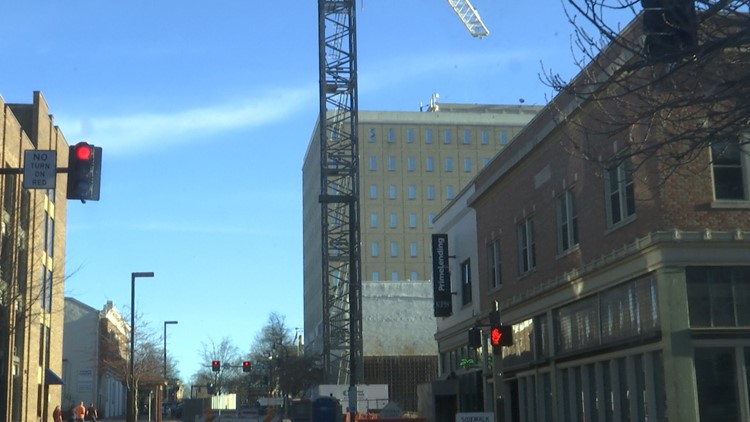MADISON COUNTY, ALABAMA, Ala — According to the latest county population estimates, more than half of Alabamians now live in the state’s eight largest counties. Most Alabama counties are losing population and all 20 of the smallest counties have lost population since 2010, according to the population estimates.
The fastest-growing county in the state is Baldwin County, which has seen 27.79 percent growth since 2011, raising its population to 233,992. A wide mix of housing options, a brisk economy, a warm climate and plenty of beaches have made Baldwin County the top destination to be in the state of Alabama over the past decade. More people in Alabama now live in Baldwin County than live in the city limits of Birmingham, Huntsville, Mobile or Montgomery. Baldwin County had just 49,088 people living there in 1960.
Dallas County was bigger than Baldwin in 1960. It is, however, the Alabama county that is shrinking the fastest. Dallas County has lost 20.19 percent of its population in a decade. At just 35,000 residents, Dallas County has fewer people now than at any time since the Civil War. It had 33,625 in the 1860 census and is down from 56,667 at its zenith in 1960. Racial strife in the 1960s, the Air Force base closing in the 1970s, the collapse of grain prices in the 1980s, which shut down many small farms, competition from Vietnam and China that has hurt the catfish business and aging infrastructure has left Dallas County hemorrhaging residents.
In the first two weeks of the 2021 Legislative Session, the Alabama Legislature renewed its economic incentives package, part of that included enhanced incentives for businesses that locate or expand facilities creating jobs in counties with populations of less than 50,000 people. On Wednesday, the Alabama Senate passed a $1 billion package that if funded would expand broadband to parts of the state that don’t have it now.
Is all of this too little too late to change the reality on the ground?
Some 72 percent of the state now lives in the 20 largest counties: Jefferson 656,861, Mobile 411,814, Madison 384,719, Baldwin 233,992, Montgomery 226,450, Shelby 221,940, Tuscaloosa 211,427, Lee 166,314, Morgan 120,631, Calhoun 112,153, Houston 108,106, Limestone 104,391, Etowah 101,583, Marshall 97,982, Lauderdale 92,979, St. Clair 91,228, Cullman 84,468, Elmore 81,605, Talladega 79,660 and DeKalb 71,725.
Only seven Alabama counties have more than 200,000 people, and six of Alabama’s 20 largest counties have experienced population declines since 2010, including both Jefferson and Mobile, but all 20 of Alabama’s smallest counties have lost people to death and migration.
Alabama’s smallest county in population is Greene with just 7,915 residents. Green has had negative population growth of -11.97 percent since 2010. Rounding out Alabama’s 10 smallest counties are: Perry at 8,629 and growth of -18.31 percent, Lowndes at 9,230 and growth of -18.24 percent, Wilcox at 9,921 and growth of -14.18 percent, Bullock at 9,955 and growth of -8.47 percent, Coosa at 10,703 and growth of -9.14 percent, Conecuh at 11,617 and growth of -12.23 percent, Sumter at 12,013 and growth of -12.51 percent, Choctaw at 12,101 and growth of -12.62 percent and Clay at 13,117 and growth of -5.62 percent.
Some 34 of Alabama’s 67 counties now have less than 35,000 residents. Of these, only Pickens and Cherokee have experienced positive population growth.
State Rep. David Standridge, R-Hayden, chairs the Rural Caucus in the Alabama Legislature.
“The biggest issue is that we are losing our young people,” Standridge said Monday. “Broadband is a contributing factor in a lot of this, particularly with our young people leaving. That is getting a lot of attention right now, but it is not the only factor.”
Access to healthcare and access to employment — how far you have to drive to work — are also factors, Standridge said.
“Agriculture is still the largest industry in our state,” Standridge said, “But used to everybody lived on their own farm. It is not like that.”
“Chicken productions, especially broilers, are a huge industry,” Standridge said. “Cattle are still a big industry, as are row crops and cotton.”
One of the things that lawmakers are doing to try to stimulate agriculture in Alabama is incentives for irrigation, Standridge said.
“There are some growing urban areas, but our state is still geographically a very rural state,” Standridge said.
Standridge acknowledged that changing migration patterns is going to be a factor when the state does redistricting later this year.
“The challenge is to do it as fairly as possible,” Standridge said.
State Sen. Jim McClendon, R-Springville, chairs the Joint Committee on Redistricting, which will be tasked with reapportionment and redistricting Alabama’s congressional districts, state Senate districts, state House districts and State School Board districts.
McClendon said that they can not begin redistricting the state based on population estimates. They have to see the real numbers, and those have been delayed by the change in administrations and issues in the Census Bureau.
“The latest I heard is that they will have them by the end of September,” McClendon said.
McClendon said that he hoped the state Legislature would be able to have a special session on redistricting in late October or November.
“I don’t want to do it in the (2022) Regular Session,” McClendon said.



